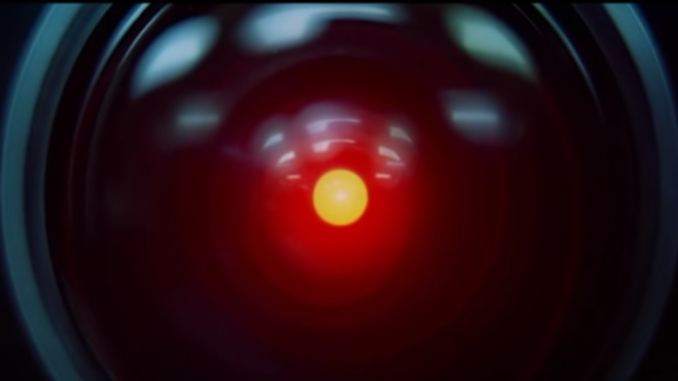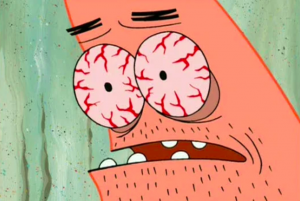“Engineers are optimistic they can find a way for the FDS to operate normally.”
“Bad” memory that lasts 45 years in interplanetary space.
#BringVoyagerHome
As soon as we invent FTL I’m sure we will
Let’s focus on FTV first
might want to sit down for this one
Bring it home…?
This is going to be one tough RMA…
All orbits are elliptical. Eventually, it will.
It’s not in an orbit. Well, it technically is, but it moved far enough away that that orbit no longer intersects with the solar system’s SOI. That was the whole point of the voyager probes, to go out into deep space. That’s why we sent them out with our mix tapes
You’re saying the same thing by a different route. It’s orbit through the galaxy eventually comes back around to us.
Incidently, this is also why we can’t just send nuclear waste on a solar escape trajectory. It eventually comes back.
It won’t have started getting closer again before the Milky Way collides with the Adromeda galaxy in 5 Billion years, so it and anything we send on a similar path isn’t coming back.
isn’t it on an escape trajectory?
Is it in orbit? And more importantly, is it in orbit around us?
It is, but not around us. It doesn’t matter, because that orbit still comes back around.
It won’t necessarily come back. Till the orbits of Voyager and the Solar system intersect, we would’ve merged with Andromeda, which would completely change all orbits in unpredictable ways. So no, you cannot say with confidence that Voyager will return back to the Solar system before the Sun dies purely using orbital mechanics.
I would believe that if the universe was not constantly expanding, that would be mathematically true. I’m not mathematician, but I think with a constantly expanding universe, that’s not a mathematical certainty.
As I understand it, expansion doesn’t really affect local systems like galaxies directly/significantly. It’s not really a factor for voyager returning or not.
Maybe in some perfect high school physics problem context. Ever heard of the three body problem? How about the million body problem zooming through the galaxy?
Why would be expect a deep space probe to return to earth when it’s going to interact with many objects with millions of times the mass of the earth?
No worries. That portion of memory only contained the ‘oya’ portion of it’s name. It will continue on, known now as Vger.
Like most of you, my brain ingests random things and chews on them to produce weird nonsensical things, like when I go to the Midwestern US supercenter chain Meijer, I say if it somehow went into deep space, went through a black hole, and returned two hundred years later, it would be known as M’jer.
I think of this every time I’m there.
deleted by creator
Futurama also did their own version https://futurama.fandom.com/wiki/V-Chip
RIP. Rest in Interstellar sPace
This is just a diagnosis of the problem.
That thing is engineered so they can bypass or repurpose ever little bit.
Which is probably what they’ll do now, do a software update that will make the system evade the bad memory segment.
Voyager has 3 computers and only 1 is affected.
Did they use 3 different types of memory? If one is failing after 45 years I’d think the odds of the other similar memory possibly failing as well is possible
Ain’t dead yet.
Hell yeah! My favourite space probes, those two.
I know Voy1 will lose power soon anyway, but until then keep fighting right to the end!
Do not go gentle into that good night,
Old age should burn and rave at close of day;
Rage, rage against the dying of the light.
Removed by mod
“Bad memory”. tpsh. That memory exceeded it’s mandate by 41 years. That memory is tired. it needed rest. It’s ready to collect it’s retirement pension.
A bit of dementia.
“Daisy… Daisy…”

…ᵗᵉˡˡ ᵐᵉ ʸᵒᵘʳ ᵃⁿˢʷᵉʳ, ᵈᵒ…
This is the best summary I could come up with:
Engineers have determined why NASA’s Voyager 1 probe has been transmitting gibberish for nearly five months, raising hopes of recovering humanity’s most distant spacecraft.
The FDS duties include packaging Voyager 1’s science and engineering data for relay to Earth through the craft’s Telemetry Modulation Unit and radio transmitter.
Suzanne Dodd, NASA’s project manager for the twin Voyager probes, told Ars in February that this was one of the most serious problems the mission has ever faced.
Due to the Voyagers’ age, engineers had to reference paper documents, memos, and blueprints to help understand the spacecraft’s design details.
After months of brainstorming and planning, teams at JPL uplinked a command in early March to prompt the spacecraft to send back a readout of the FDS memory.
“The team suspects that a single chip responsible for storing part of the affected portion of the FDS memory isn’t working,” NASA said in an update posted Thursday.
The original article contains 668 words, the summary contains 153 words. Saved 77%. I’m a bot and I’m open source!
Important points missed by the bot:
FDS is the Flight Data Subsystem:
The Flight Data Subsystem was an innovation in computing when it was developed five decades ago. It was the first computer on a spacecraft to use volatile memory. Most of NASA’s missions operate with redundancy, so each Voyager spacecraft launched with two FDS computers. But the backup FDS on Voyager 1 failed in 1982.
They identified the problem:
The command worked, and Voyager.1 responded with a signal different from the code the spacecraft had been transmitting since November. After several weeks of meticulous examination of the new code, engineers pinpointed the locations of the bad memory.
They think they can work around the problem:
“Although it may take weeks or months, engineers are optimistic they can find a way for the FDS to operate normally without the unusable memory hardware, which would enable Voyager 1 to begin returning science and engineering data again,” NASA said.
Thank you kind human
FDS is the Flight Data Subsystem:
Not to be confused with the Famicom Disk System, First Date Sex, or Feminine Deodorant Spray.
Fuk Dat Shit
Here is an alternative Piped link(s):
You’ve been mostly dead all day.
Piped is a privacy-respecting open-source alternative frontend to YouTube.
I’m open-source; check me out at GitHub.
Even space probes are susceptible to dementia it seems.
Most manufacture have a lifetime warranty with their memory sticks.
“Bring it into the shop, we’ll replace the stick for free.”














